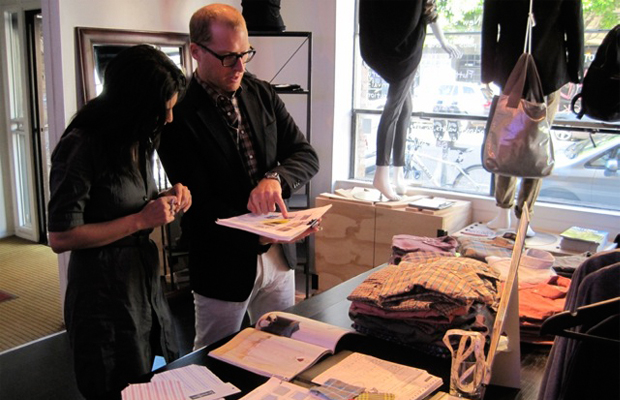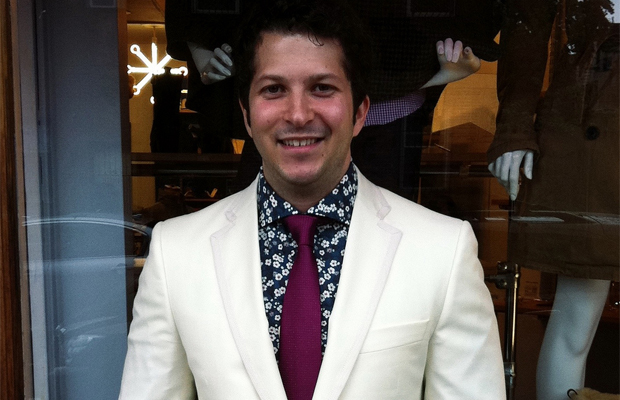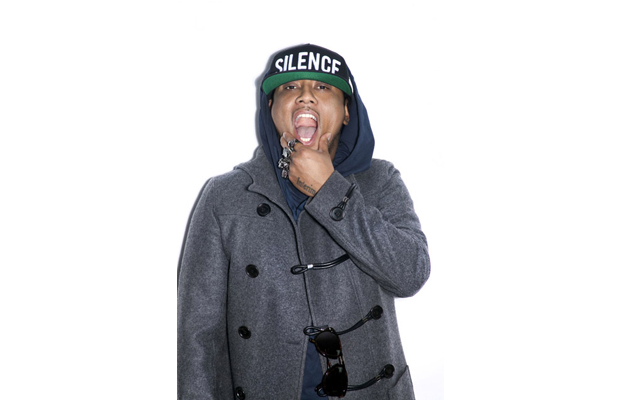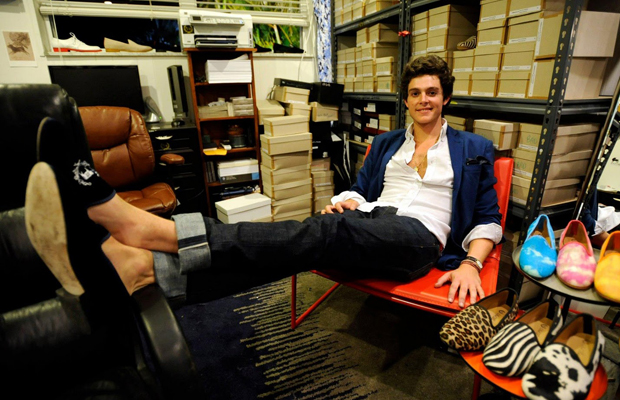Complex Magazine Article –
TOO BIG OF SALES
Chris Olberding, Gitman Vintage
“When the buyer asks, ‘Do you have minimums?’ I always respond, ‘No, only maximums.’ One good rule of thumb: it’s better to start off saying no to potential accounts when it’s not exactly where you want to be. When it is, make sure you don’t let them overbuy—it keeps the sell-through high and the demand higher. Product is always King, but the Queen is keeping it tight. I can’t name names with this one, but making too big of a sale has happened and I had to deal with the residuals.”
MANUFACTURING PROBLEMS
Pranav Vora, Hugh & Crye
“In our first collection (F/W 2010), we had a French/double cuff shirt in two colorways; blue and white two-ply Italian poplins. Our production prototypes looked great, and we were excited to introduce a more formal shirt to our conservative base in Washington, D.C. When we received our product and were inspecting it, we noticed the cuffs were off. The manufacturer actually produced the shirts with ‘convertible’ cuffs—ones that have buttons like you would expect in regular shirts, but an extra button-hole so that they can be worn with cuff links as well. Oddly enough, the convertible cuff has done extremely well with our customers. They love the flexibility, especially over a French cuff shirt. We weren’t happy about the manufacture messing up, but in the end, our customers didn’t mind the convertible cuff, and in fact preferred it. We continue to produce the convertible cuff in many of our styles today for that reason.”
LACKING PATIENCE
Billy Moore, Cause & Effect
“Well as far as horror stories go, just starting a brand is scarier than anything Freddy Kruger has ever dreamt up. The stress is crazy, the hours long, and money non-existent. That said, the first time someone else loves what you created puts you in a state of euphoria. The most valuable lesson I have learned involves patience and faith in yourself. I have wanted my stuff in stores so badly that I have put it on consignment and in stores I knew were sketchy pays. It left me short on cash and depressed. Believe in your product and ask around about stores. The menswear market is really small and most info is just an email or two away. Always value yourself and your time but when you do give in to the moment (and you will) and go against your instincts, step back, have a beer and a shot of moonshine, and do what you do best—making something really fucking cool.”
DESIGNING FOR TRENDS
Michael Kule, Epaulet
“The biggest mistake that I’ve made is designing for someone outside of my customer base. As much as I might personally admire really directional and off-kilter designs, our customers ultimately come to us for things which are modern, versatile, and classic. When I’ve tried to make things which are too trendy and expensive, they’ve generally flopped. That’s not what guys want from our brand.
“Overall, this experience has helped me to keep centered. You can’t—and shouldn’t try to be—all things to all people. Doing good clothing design isn’t a speech, it’s a conversation. You have to listen to your customers and work to make what they’re really looking for. You need to push the envelope and use your own vision, but you should be conscious of delivering a product that people will want and accept from you. Ultimately, I’m very good at selling navy sportcoats, wingtips, and slim trousers. I need to leave the hardcore directional streetwear stuff to the people who do it best.”.
TAKING A GAMBLE ON PRODUCT VOLUME
Mega, Black Scale
“There are obstacles of running a company daily, especially being an independent company. We are trying to run a machine without all the knowledge other successful companies have. We learn everyday and mistakes are always made but the scariest part I ever experienced was when a big retailer like Metro Park closed and they owed us $100,000 plus, which would probably be nothing to a big company, but for us, funding everything we do on our own, something like that can kill you.
“We took that experience and really changed up our distribution game. We stopped gambling and started making just enough so we know the volume we are making won’t kill us in case another big door business shuts down. The craziest part about that was they accepted all the goods in their warehouses the day before we got the bankruptcy papers telling us Metro Park will be going out of business. People will snake you and don’t give a fuck who you are because all they are worried about is their own business. Always make sure you have a great relationship with the smaller guys with smaller doors and create a product that the bigger doors can sell out so your money is guaranteed.”
WRONG BRAND IDENTITY AND STARTING A BUSINESS WITH FRIENDS
Matthew Chevallard, Del Toro Shoes
“First off, starting a business with friends is a nightmare. Always remember to put every imaginable provision on paper before a business is started with your friend.
“Another important lesson is one must build a company around sales, a concept, and build organically from there. My two business partners who ran the company before I did were very scattered in developing Del Toro and as a result the company almost went belly-up before I took it over. I focused on moving product and sales and figuring it out from there what actually worked.
“My business partners thought that we could kill the market by introducing velvet slippers with customization at a much more affordable price level. Therefore, they bought 75K in inventory of black velvet classics and a 20K Toyota embroidery machine thinking we could do embroidery directly onto them. They were sadly disillusioned after the fact that that is impossible. Therefore, the first two years, we realized our business model was flawed and we were digressing day by day. When I took it over, I wanted to switch the focus from customized velvet slippers and a mom and pop feel company to a lifestyle luxury brand. My intent was to move beyond the velvet slipper as soon as I had the chance. Also, I had no interest in being a bootleg velvet slipper company with no identity. Therefore, I moved the company to Miami from Palm Beach and began crafting the identity Del Toro stands for today: a luxury lifestyle brand influenced by American Prep x Italian elegance x NY/ Japanese streetwear sneakerhead culture.
“The list goes on and on with hiccups and bumps and the moral of the story is you live and learn from every mistake and everything is to be learned from. Important thing is you evolve and hone yourself with every challenge instead of being crippled by it. Ultimately every annoying bad thing that happened to me was a blessing in disguise that helped me find a cheaper and more efficient way.”
NO PRODUCT TESTING
Christian McCann, Left Field NYC
“One of the biggest mistakes I’ve made was not doing my own shrinkage tests. What they don’t tell you when you first start out is that the same jersey or fleece knit can and will shrink differently based on the color it’s been dyed, and/or the lot it comes from. Making matters worse is if you’re getting your fabrics from a jobber [Ed note: the middle man charging “discount” prices], ’cause they’ll send whatever they have, not necessarily what you ordered. I learned this the hard way my second season out.
“For my first run of sweats, I used an 80/20 cotton poly fleece. When I reordered, I was sent a 95/5, but I was told it was the same 80/20. So, I did the run, and what do you know, I ended up with sweatshirts much shorter then the first round due to the higher cotton content. Luckily, most of my business was in Japan at the time, and they already thought my sweats were too long, so it worked out okay. But, moral of the story is never trust jobbers—they all lie—and always check your fabric shrinkage on your own before doing a production run, or prepare to pull out a lot of hair, and lose a lot of money.”
NOT FOLLOWING YOUR OWN RULES
Eunice Lee, UNIS
“Here are ten things I learned. First, know that you’re in the business of being in business. If the business side of things isn’t sound, the brand isn’t going to survive. I think most designers aren’t really aware of what they’re getting themselves into, we have a tendency to romanticize everything. Second, focus on a few good things. Do it differently and do it better. I used to design a much larger collection. Looking back, I cringe at how much money I wasted. Less is more.
“Third, know who your customers are. If you don’t know who’s going to be buying your product, stop now. When I first opened the store, I was shocked to see who came in. My guy was so different than I imagined him. Having the store has been one of the best things that’s happened to me as a designer. Fourth, the most expensive mistakes I’ve made were made out of impatience. Urgency is necessary, but desperation can be hurtful. Things have a way of unfolding the way they’re supposed to. Fifth, learn how to build relationships. They are so crucial to survival. After all, you never know when you’re going to need a favor.
“Sixth, hire an accountant and book keeper immediately. Seventh, hire a lawyer too. Trademarks are a complicated mess. Eighth, don’t trust anyone who says ‘trust me.’ Ninth, pay your dues, and get some experience. Don’t yell at your factories for not knowing what you’re doing.














